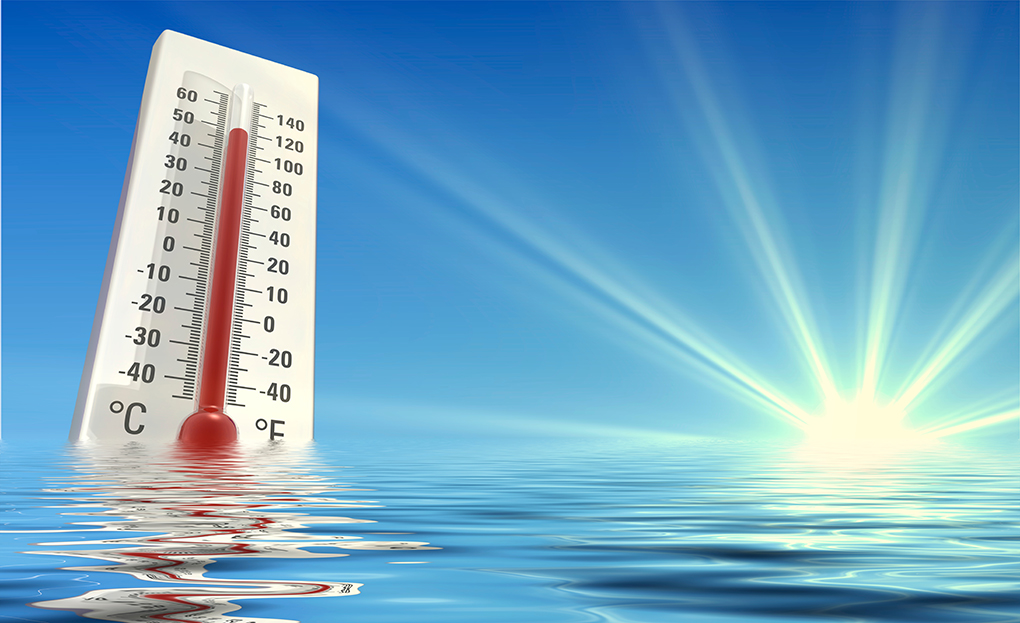
Lytton, British Columbia, reported Canada’s highest ever recorded temperature of 49.6ºC (121.3ºF) on Tuesday, June 29th, 2021. While Lytton might be Canada’s “hottest city,” note that the average high temperature for Lytton in June is 76ºF and 83ºF for July. Many Canadians have never had to own a home air conditioner or aquarium chiller. One Canadian woman said in an aquarium group on Facebook, “It’s just never been this hot. We were completely unprepared.” We can likely expect to see more unusually high temperatures in the US and Canada this summer.
When aquarists find themselves in an emergency heat situation either due to a power outage or unexpected temperatures, what can they do to save their aquariums?
Freeze as many water bottles as possible and float them in the aquarium or sump. When the bottles thaw, replace them with more frozen bottles. If your freezer is not working, you can buy bags of ice from the gas station and keep them in a large closed cooler for a couple of days. fill a container with ice, and float it in the aquarium or sump.
If you have electricity, use a clip-on or standing fan to blow across the top of the water in the tank or sump. Evaporation can decrease the temperature of the aquarium by up to 4 degrees with a powerful fan. You’ll need to add freshwater frequently as the fan speeds up evaporation of the water.
Wrap the tank in insulation—layers work best. Use blankets, cardboard, newspaper, and/or Styrofoam. Secure the materials with packing tape. This turns your aquarium into a makeshift insulated cooler and helps keep the temperature more stable.
Reverse your light cycle. Turn on the lights during the cooler temperatures of the night and turn the lights off during the heat of the day. Throw a thin blanket or two over the top of the tank during the day to help insulate the tank, but never put a blanket over the lights when they’re turned on, since aquarium lights need ventilation.
If you’re in full emergency mode and just can’t seem to get your tank’s temperature down, start unplugging the tank equipment that gives off the most heat—usually the highest wattage gadgets. Make sure to leave wavemakers or air pumps turned on in the tank and sump for proper circulation. Remember your fish need MORE water circulation and oxygenation right now. As the temperature rises, oxygen saturation drops. You may want to turn off only high-wattage pumps, like return pumps that need to battle head pressure in the sump. Add additional low-wattage powerheads, wavemakers, or air pumps to break the water surface.
Monitor pH and oxygen levels. Vigorous water flow in the main tank is important. Having a connected refugium with macroalgae and a small light can help. Dosing hydrogen peroxide in an aquarium can raise oxygen levels, but can be risky. Familiarize yourself with the proper H2O2 dosage and warnings before using hydrogen peroxide in your aquarium. If all else fails, it can be a useful tool in the direst of emergency, low-oxygen situations.
Remove any decaying organic matter immediately. If livestock or algae dies, it must be removed right away, as allowing matter to decompose will further reduce oxygen levels.
Can you think of any more ways to help keep your tank safe during a heatwave? Share them in the comments!
References





Great article, Felicia! In the past, I’ve frozen containers of RO water, RO Bergs, and used them for top-off water. When it gets hot here it’s often humid too so you don’t get much evaporative cooling without a fan. Once you get that going the RO Bergs are great for topping off. 🙂
Thanks, Tal! We appreciate your input! My freezer is pretty tiny, but at least I can freeze RO in my ice cube trays and use them for my nano tank. Great idea!